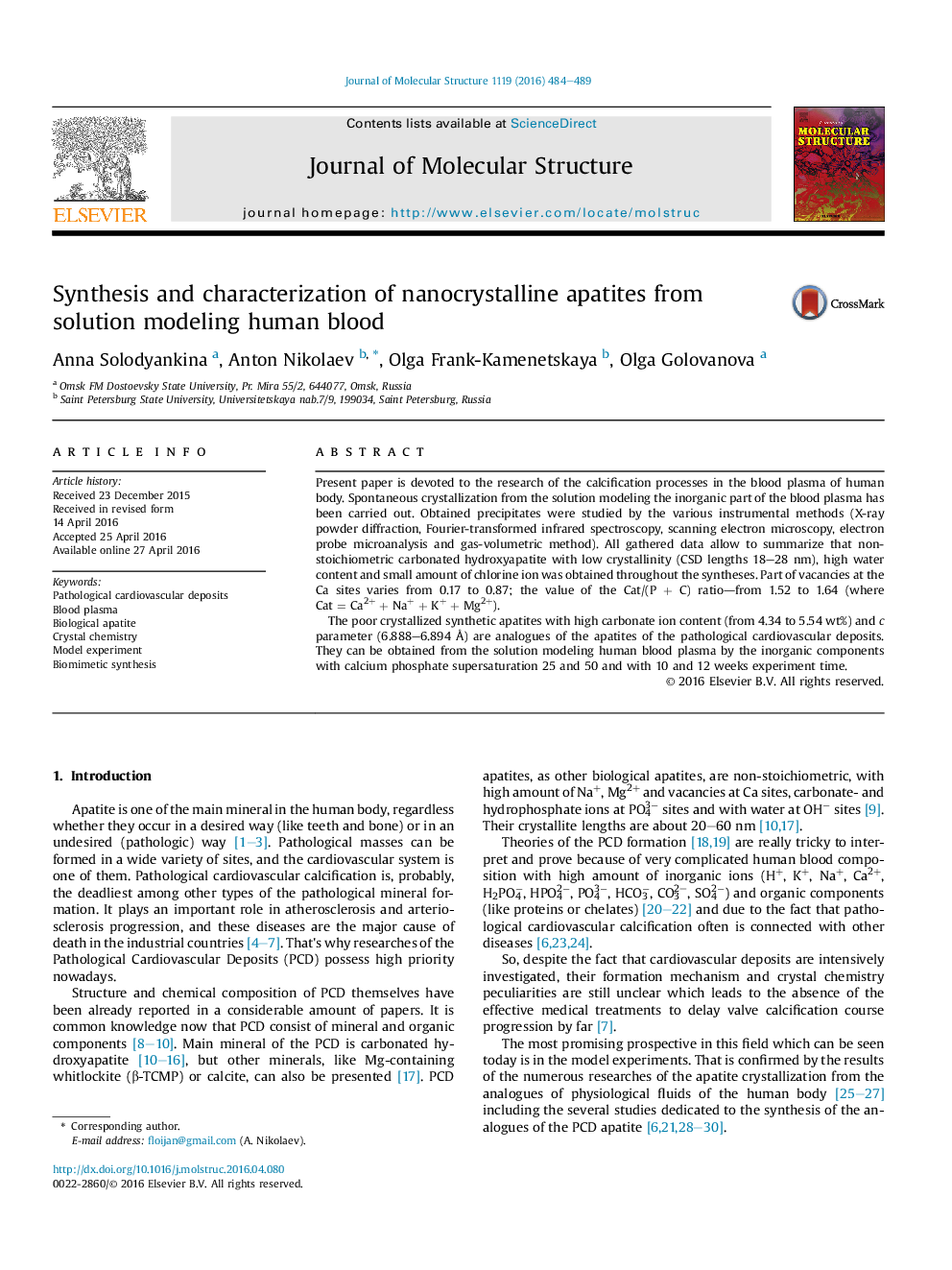| Article ID | Journal | Published Year | Pages | File Type |
|---|---|---|---|---|
| 1404819 | Journal of Molecular Structure | 2016 | 6 Pages |
•Spontaneous crystallization from the solution modeling human blood plasma has been carried out.•Apatite close to the apatite of pathological cardiovascular deposits in CO32− content and crystalline lengths was obtained.•Biomimetic synthesis should be carried out with the calcium phosphate supersaturation 25 or 50 during 10 or 12 weeks.
Present paper is devoted to the research of the calcification processes in the blood plasma of human body. Spontaneous crystallization from the solution modeling the inorganic part of the blood plasma has been carried out. Obtained precipitates were studied by the various instrumental methods (X-ray powder diffraction, Fourier-transformed infrared spectroscopy, scanning electron microscopy, electron probe microanalysis and gas-volumetric method). All gathered data allow to summarize that nonstoichiometric carbonated hydroxyapatite with low crystallinity (CSD lengths 18–28 nm), high water content and small amount of chlorine ion was obtained throughout the syntheses. Part of vacancies at the Ca sites varies from 0.17 to 0.87; the value of the Cat/(P + C) ratio—from 1.52 to 1.64 (where Cat = Ca2+ + Na+ + K+ + Mg2+).The poor crystallized synthetic apatites with high carbonate ion content (from 4.34 to 5.54 wt%) and c parameter (6.888–6.894 Å) are analogues of the apatites of the pathological cardiovascular deposits. They can be obtained from the solution modeling human blood plasma by the inorganic components with calcium phosphate supersaturation 25 and 50 and with 10 and 12 weeks experiment time.
